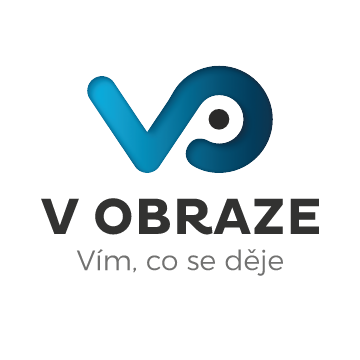Monuments in the municipality and its neighbourhood
MONUMENTS IN THE MUNICIPALITY AND ITS NEIGHBOURHOOD
CHAPEL AND CEMETERY
The date of foundation of the Chapel Navštívení Panny Marie in Moldava is not known. It was rebuilt in 1687 and extended in 1851. It is a single-aisle rectangular building with a remarkable prismatic tower covered with shingle. The chapel is furnished in Pseudobaroque style. It is a dominant feature of the lower Moldava and it has had a disturbed past.
The border village was always more German than Czech therefore the Protestantism was more rooted here than the Catholic Faith. In 1537 the monarch Ferdinand I established exact land borders and Moldava became a part of Bohemia. After the end of The Thirty Years War the Cistercians from Osek came to the mountains to return heretics in Moldava to the bosom of the true church. The reason was that the local chapel was empty because people went to neighbouring Hermsdorf. In 1668 Prague Archbishop’s order about strict implementation of Catholicism came to the borderland. The reaction was quick. A number of people escaped to Saxony, the local authorities started to demand the corvee labour and people started slowly and reluctantly going to the chapel. The Catholic Faith spread to the boundaries of the Czech Land and the chapel in Moldava was consecrated and named after an altar picture the Visit of Virgin Mary in 1687.
At present there are regular Sunday church services in the chapel and once a year there is a Holy Mass during which former natives of Moldava, Pastviny and Oldříš meet.
Both the cemetery and the chapel are national monuments. The most interesting cemetery relics are wooden crosses and gravestones from the 19th century. The cemetery is owned by the village, which plans to reconstruct it and to reinstate the burials.

GLASSWORKS
In the years 1991 and 1992 leading specialists restored medieval wood-fired glass furnace. The archaeological exploration was accomplished by ČSAV Praha, a branch office Most. The glass furnace is a unique technical construction, which has been proposed to belong to a list of state-protected monuments. In the years 1992 and 1994 three experimental melts were realized, during which medieval techniques of glass melting, cooling and formation were examined. Glass formation was pursued by the best gaffers from Nový Bor and its neighbourhood.
A medieval glass furnace replica is a part of Naučná sklářská stezka (“Educational Glass Path”) and it can be found in the upper Moldava.
FRANTIŠEK KOUBEK MEMORIAL
On September 28, 1938 Henlein’s followers shot František Koubek, a member of financial guard, in Moldava customs area. By means of fund-raising campaign of financiers from Dubí a granite memorial to F. Koubek was built in 1947. It can be found near the border crossing in the upper Moldava.
In the period preceding the signing of Munich Agreement the situation on the frontiers was explosive. According to historical materials there were many victims on the western border of our state.
To build the memorial a granite monolith from a memorial to German victims of the World War I, which stood at the chapel in the lower Moldava, was used.
RAILWAY STATION AND RAILWAY LINE
North-Bohemian railway line from Most to Moldava in the Ore Mountains, which leads further to Saxony, was laid between the years 1871 and 1884. Historical materials indicated that the first train arrived in Moldava on December 6, 1884 and it was a freight train. Regular personal transportation across the border in Moldava started on Monday, May 18, 1885.
During its boom period there were 11 running railways, 5 handling railways, 34 switches, goods store, another store, 2 signal boxes, an engine shed, water station, a dock, an unloading place, 2 turntables and a large station building in the railway station in Moldava. There were a room for Czech and German dispatchers, a customs and a passport office of both countries, a restaurant and a post office. After the World War II there remained only ČSD train dispatcher, a post office and state border guards in the building. The unoccupied rooms were used as workrooms and boarding rooms for students at the training institution which operated until June 1986. Now the rooms are occupied by the Vietnamese who carry business at the border crossing. In the building there are a room for the dispatcher, a waiting room, restrooms and a restaurant.
On May 7, 1945 at 5.30 p.m. the train service to Germany was stopped. Four years later the Soviet soldiers tore up circa 200 meters of railways on the German side. That was the beginning of the end. Regardless the bad state of the railways and of the train service the railway line from Louka at Litvínov to Moldava in Krušné hory has been declared a cultural monument of the Czech Republic in July 1998. Since the time there has been a mutual effort to restore the railway connection between the Czech Moldava and Saxon Holzhau.
MOUNTAIN LODGE ON BOUŘŇÁK
An author of the idea to build a mountain lodge on Bouřňák was a Dux teacher Karel Lím in 1923. The estate was obtained from the family of Lobkovice. At the beginning of June, 1927, a Prague architect Dr. Josef Hörich came to this area and together with Ing. Kolenský they measured a road and a building site. Up to November 30, 1927 a veranda was built according to a Dux architect Josef Jána.
On July 15, 1928 placing of the foundation stone was celebrated. This stone marked by a date can be found among blocks of a stone house underpinning. Furthermore, there is also a plaque to a founder of a Czech Ore Mountain hiking, Karel Lím, made by an academic sculptor, František Rábel. The lodge cost 1 million crowns and was inaugurated on June 8, 1930.

(written by: Mgr. Markéta Kvasňová)



